

Geomorphology means the change of land over time. Geomorphology can be studied anywhere and is often used by scientists to help them learn about what happened in the past or how they can prevent land change. For example, on Santa Cruz Island, UCSB geomorphologists are studying how the cattle that resided on the island in the past have affected the island now. They are doing this in many ways by conducting science experiments on the land and exploring the island.
We chose this topic because we thought we would be able to expand our thinking and go beyond the limits. When we decided we wanted to research Geomorphology, in our minds we thought about how streams and bodies of water affect the land around it. We knew before going to the islands to conduct our experiments that we would be working with stream geomorphology. We prepared to test the stream length, depth, and width. Me and my partner both were interested in the stream when we were deciding on our topic. So we choose Geomorphology so we could work with the stream.
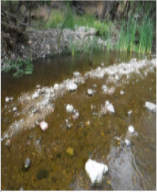
Our goal for this research project was to figure out how much the stream changed in two days. We conducted this experiment by going to the stream and filling out a datasheet on our first day of research that included depth, width, and temperature. Two days later we filled it out again at the same spot at the creek. Here is a graph of our data for both days.
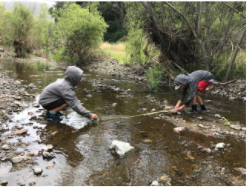
This is me and my friend measuring the width of the creek.
| Stream Depth | Near Bank | Mid Stream | Far Bank | Steam Width | Temperature |
|---|---|---|---|---|---|
| Day 1 | 1 3/4 in | 2 1/2 in | 6 1/2 in | 224 in | 60 °F |
| Day 2 | 2 in | 2 1/2 in | 6 1/2 in | 210 in | 60 °F |
Something I thought was interesting was that the stream width decreased but the near bank width increased.This could have happened by the stream washing away some rocks on the substrate and increasing the depth. Another possibility is that the upstream of the creek could have been dammed up. Something we took out of this experiment is that geomorphology happens over a long period of time. Not much changes in two days. But if each day the creek eroded by 2 inches imagine in 1,000 years how much erosion would have happened.
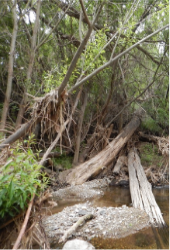
This tree fell across the
river upstream. This is an
example of erosion because
when the creek started running
it moistened the dirt and made
the roots come up.
We decided to see how putting rocks in the stream would change the flow or current of it. This is a simulation of a rock slide or erosion. First we put 4 rocks and put a leaf down it. The leaf took a sharper turn. I think this is because the current will hit the bank and bounce off. Then we took away a rock and the leaf took a wider turn.
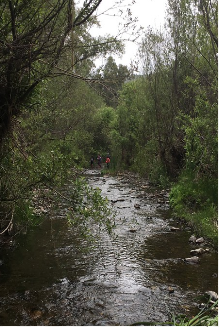
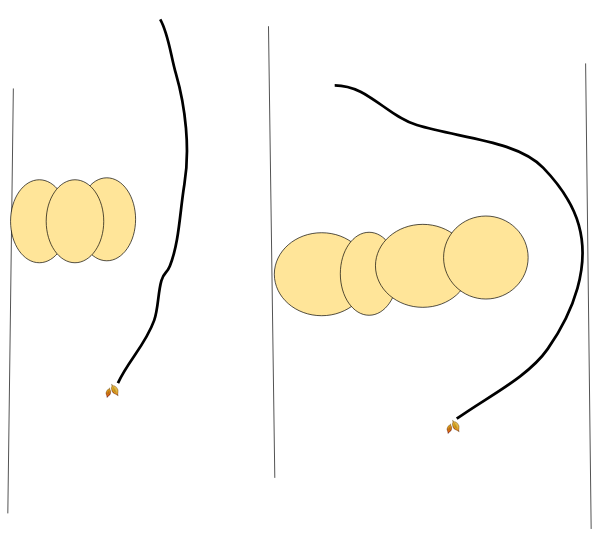
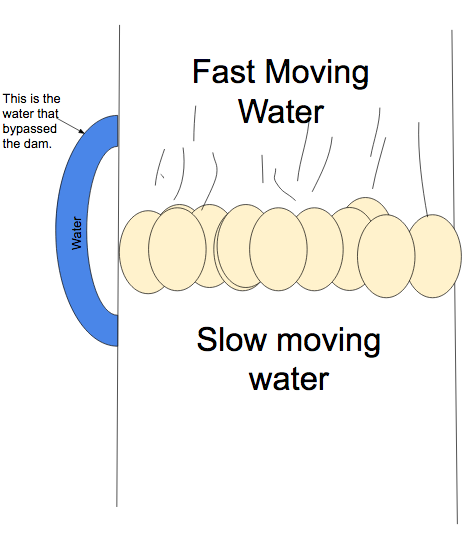
This is a replica of the dam we made and how it worked. We built it across the creek to see what would happen to the stream width and depth. They both increased and some water started bypassing the dam itself.